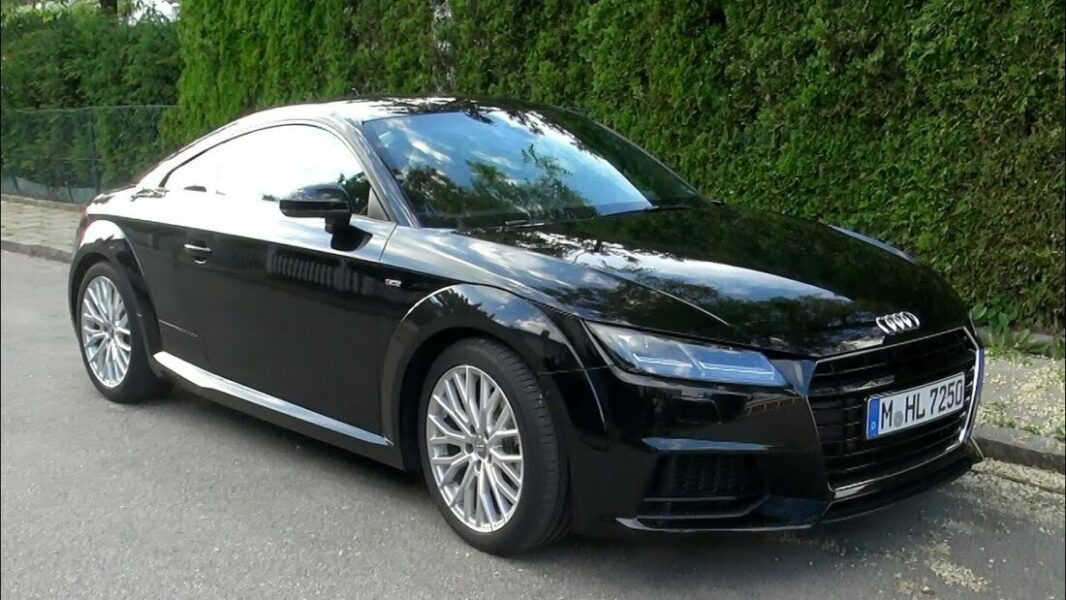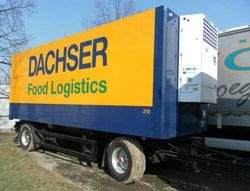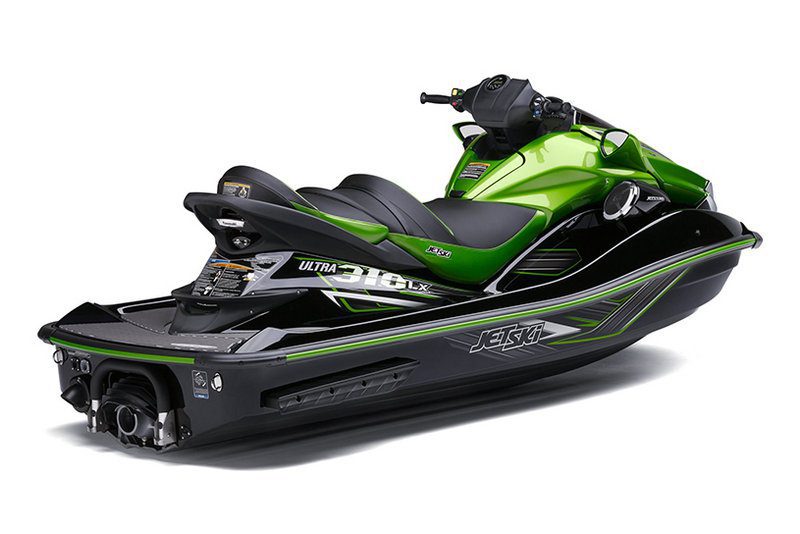
Test: Audi TT Coupe 2.0 TDI ultra
Content
In '18, when raced in the R2012 Ultra (it was Audi's last all-diesel car without a hybrid transmission), it represented not only speed, but also excellence in fuel economy, which is as important as performance in inertia racing. Those who have to go to the pits to refuel less often spend more time on the track - and therefore faster. Everything is simple, right? Of course, even then it was clear that Audi did not just invent the Ultra label for the car. Just as Audi's stock electric and plug-in hybrid models carry the e-tron designation, which goes hand in hand with the R18 hybrid racing designation, their low-fuel diesel models have received the Ultra designation.
So don't be fooled by the Ultra label on behalf of the test TT: it's not a particularly slow version of the TT, it's just a TT that successfully combines performance with lower power consumption. Consumption that can compete with the most economical family car in our scale of consumption on a normal lap, although such a TT accelerates to hundreds of kilometers per hour in just seven seconds, and its two-liter turbodiesel engine with 135 kilowatts or 184 horsepower '' It is still possible to determine the torque moment of 380 Newton meters, who knows how to get rid of the sensation of blows to the buttocks characteristic of a turbodiesel. The result of 4,7 liters of consumption on a normal circle definitely justifies the Ultra lettering on the back of this TT.
Part of the reason is also in the rather small mass (empty weighs only 1,3 tons), which is due to the widespread use of aluminum and other lightweight materials. But, of course, this is only one side of the matter. There will probably be buyers who buy TTs in order to drive with minimal fuel consumption, but such people will have to put up with the other side of the coin: the inability of a diesel engine to spin up at high speeds, especially a diesel one. sound. When the TDI announces it this morning, its sound is unmistakable and unmistakable by the diesel engine, and even the efforts of Audi engineers to make the sound more sophisticated or sporty haven't really paid off. The engine is never quiet.
That's still acceptable given the sporty nature of the coupe, but what if its sound is unmistakably always diesel. Switching to a sportier setting (Audi Drive Select) doesn't mitigate this either. The sound gets a little louder, a little humming or even drumming, but it can't hide the character of the engine. Or maybe he doesn't even want to. In any case, adjusting the sound of a diesel engine can never produce the same result as a gasoline engine. And for the TT, the two-liter TFSI is undoubtedly the best choice in this regard. Since the Ultra-badged TT is also aimed at reducing fuel consumption, it's no wonder it's only available with front-wheel drive. Less internal loss in transferring power to the wheels simply means less fuel consumption. And despite a very solid chassis (in the TT test it was even more solid with the S Line sports package), such a TT has a lot of problems transferring all the torque to the ground. If traction is poor on pavement, the ESP warning light will come on too frequently in lower gears, and not at all on wet roads.
Of course, this helps to tune Audi Drive Select for comfort, but miracles are not to be expected here. In addition, the TT was fitted with Hankook tires, which are otherwise very good on coarser asphalt, where the TT exhibits very high borders and a very neutral position on the road, but the smoother Slovenian asphalt the boundaries shift. unexpectedly low. If it's really slippery (to add rain, for example), the TT (also just because of the front-wheel drive) has understeer if the road smoothness is somewhere in the middle (imagine dry Istrian roads or smoother sections on our ends). she can slip the ass quite decisively. Driving can be enjoyable when the driver knows they need a little more throttle and that harsh steering wheel responses are unnecessary, but the TT always made it feel like it didn't get along with its tires on these roads.
However, the essence of the TT is not only in the engine and chassis, it has always been distinguished by its shape. When Audi introduced the first generation of the TT coupe in 1998, it made a splash with its shape. The highly symmetrical form, in which the direction of travel was actually indicated only by the shape of the roof, had many opponents, but the sales results showed that Audi was not mistaken. The next generation has moved far away from this concept, and with the new generation the third has returned to its roots in many ways. The new TT has signature styling, especially the mask, and the side lines are almost horizontal, as was the case with the first generation. However, the overall design also shows that the new TT is closer in design to the first generation than the previous one, but of course in a modern style. Inside, the main design features are easy to identify. The instrument panel is curved towards the driver, shaped like a wing on top, the same touches are repeated on the center console and door. And the last clear move: goodbye, two screens, goodbye, low-lying commands - all this the designers have changed. Below are just a few less used buttons (for example, to manually move the rear spoiler) and the MMI controller. Instead of classic instruments, there is one high-resolution LCD screen that displays all the information the driver needs.
Well, almost everything: despite such a technological design, just below this LCD display, it is incomprehensible, remained much more classic, and mainly due to segmental backlighting, inaccurate engine temperatures and fuel gauges. For all the excellent on-screen fuel gauges offered by modern cars, this solution is incomprehensible, almost ridiculous. If such a meter is somehow digested in the Seat Leon, it is not acceptable for the TT with the new LCD indicators (which Audi calls the virtual cockpit). The sensors are of course very clear and offer all the information they need easily, but the user only needs to learn how to use the left and right buttons on the steering wheel or on the MMI controller in the same way as using the left and right buttons. mouse buttons. It is a pity that Audi did not take a step forward here and did not provide the user with the possibility of individualization.
Thus, the driver is doomed to always show the speed both with the classic sensor and with a numerical value inside it, instead of, for example, deciding that he needs only one or only the other. Maybe instead of a separate rev counter and rev counter on the left and right, you prefer a rev counter and speed numbers in the middle, left and right, for example for navigation and radio? Well, maybe that will make us happy at Audi in the future. For generations of customers accustomed to customizing smartphones, such solutions will be a necessity, not just a welcome extra feature. The MMI that we at Audi are used to is very advanced. In fact, the top of his controller is the touchpad. So you can select phone book contacts, a destination, or a radio station name by typing it with your finger (this is something you don't need to take your eyes off the road as the machine also reads every written character). The solution deserves the label “excellent” with a plus, only the location of the controller itself is a little embarrassing - when switching, you can get stuck with the sleeve of a shirt or jacket if it is a little wider.
Since the TT thus only has one screen, the designers of the air conditioning (and display) switch conveniently hid it in the three middle buttons to control the vents, which is a creative, transparent and useful solution. The front seats are exemplary both in the shape of the seat (and its side grip) and in the distance between it and the seat and pedals. They may have a slightly shorter stroke (that's an old VW Group disease), but they're still fun to use. We were less happy with the installation of the air vent for defrosting the side windows. It cannot be closed and its explosion can hit the heads of taller drivers. There is, of course, little space behind, but not so much that the seats are completely useless. If a passenger of average height sits in the front, then a not so small child can sit in the back without much difficulty, but of course this only applies as long as they both agree with the fact that the TT will never be an A8.
It is worth mentioning that the TT does not have a retraction system for the front seat that would move it all the way forward and then return it to the correct position, and only the backrest retracts. Trunk? With its 305 liters, it is quite spacious. It is rather shallow but large enough for family weekly shopping or family luggage. Honestly, you shouldn't expect anything more from a sports coupe. The additional LED headlights are excellent (but unfortunately not active), as is the Bang & Olufsen sound system, and of course there is an extra charge for the smart key as well as navigation with the aforementioned MMI system.
In addition, you also get a speed limiter in addition to cruise control, of course you can think of many other things from the accessories list. In the test TT, it was for a good 18 thousand, but it's hard to say that you can easily refuse anything from this list - except perhaps the sports chassis from the S line package and, possibly, navigation. About three thousand could have been saved, but no more. So the Ultra labeled TT is actually quite an interesting car. It's not for the whole family, but it also does a pretty good job, it's not an athlete, but it's really fast and quite fun, but also economical, it's not a pleasant GT, but it finds itself (more with the engine and less with the chassis) on long trips. She's pretty much the kind of girl for anyone who wants a sports coupe. And, of course, who can afford it.
text: Dusan Lukic
TT Coupe 2.0 TDI Ultra (2015)
Basic data
| Sales: | Porsche Slovenia |
|---|---|
| Base model price: | 38.020 € |
| Test model cost: | 56.620 € |
| Power: | 135kW (184 KM) |
| Acceleration (0-100 km / h): | 7,1 with |
| Maximum speed: | 241 km / h |
| Mixed flow ECE: | 4,2l / 100km |
| Guarantee: | 2 years general warranty, 3 and 4 years additional warranty (4Plus warranty), Varnish warranty 3 years, 12 year anti-rust warranty, unlimited mobile warranty with regular maintenance by authorized service centers. |
| Oil change every | 15.000 km |
| Systematic review | 15.000 km |
Cost (up to 100.000 km or five years)
| Regular services, works, materials: | 1.513 € |
|---|---|
| Fuel: | 8.027 € |
| Tires (1) | 2.078 € |
| Loss of value (within 5 years): | 17.428 € |
| Compulsory insurance: | 4.519 € |
| CASCO INSURANCE (+ B, K), AO, AO + | 10.563 ( |
| Calculate the cost of auto insurance | |
| Buy up | € 44.128 0,44 (km cost: XNUMX €) |
Technical information
| engine: | 4-cylinder - 4-stroke - in-line - turbodiesel - front mounted transversely - bore and stroke 81 × 95,5 mm - displacement 1.968 cm3 - compression 15,8: 1 - maximum power 135 kW (184 hp) at 3.500 -4.000 rpm - average piston speed at maximum power 12,7 m / s - specific power 68,6 kW / l (93,3 hp / l) - maximum torque 380 Nm at 1.750–3.250 rpm min - 2 camshafts in the head) - 4 valves per cylinder - common rail fuel injection - exhaust gas turbocharger - charge air cooler. |
|---|---|
| Energy transfer: | the engine drives the front wheels - 6-speed manual transmission - gear ratio I. 3,769; II. 2,087; III. 1,324; IV. 0,919; V. 0,902; VI. 0,757 - differential 3,450 (1st, 2nd, 3rd, 4th gears); 2,760 (5th, 6th, reverse gear) - 9 J × 19 wheels - 245/35 R 19 tires, rolling circumference 1,97 m. |
| Capacity: | 241 km/h top speed - 0-100 km/h acceleration in 7,1 s - fuel consumption (ECE) 4,9/3,7/4,2 l/100 km, CO2 emissions 110 g/km. |
| Transportation and suspension: | combi - 3 doors, 2 + 2 seats - self-supporting body - front single suspension, leaf springs, three-spoke transverse rails, stabilizer - rear multi-link axle, coil springs, telescopic shock absorbers, stabilizer - front disc brakes (forced-cooled), rear disc, ABS, mechanical parking brake on the rear wheels (switching between seats) - rack and pinion steering, electric power steering, 2,9 turns between extreme points. |
| Mass: | empty vehicle 1.265 kg - Permissible gross vehicle weight 1.665 kg - Permissible trailer weight with brake: n/a, without brake: n/a - Permissible roof load: 75 kg. |
| External dimensions: | length 4.177 mm – width 1.832 mm, with mirrors 1.970 1.353 mm – height 2.505 mm – wheelbase 1.572 mm – track front 1.552 mm – rear 11,0 mm – ground clearance XNUMX m. |
| Inner dimensions: | longitudinal front 860-1.080 mm, rear 420-680 mm - front width 1.410 mm, rear 1.280 mm - head height front 890-960 810 mm, rear 500 mm - front seat length 550-400 mm, rear seat 305 mm - trunk 712 –370 l – steering wheel diameter 50 mm – fuel tank XNUMX l. |
| Box: | 5 seats: 1 aircraft suitcase (36 L), 1 suitcases (68,5 L), 1 backpack (20 L). |
| Standard equipment: | airbags for the driver and front passenger - side airbags - curtain airbags - ISOFIX mountings - ABS - ESP - power steering - automatic air conditioning - front power windows - rear-view mirrors with electric adjustment and heating - radio with CD player and MP3 player – multifunction steering wheel – central locking, central locking – steering wheel with height and depth adjustment – rain sensor – height-adjustable driver's seat – split rear bench – on-board computer. |
Our measurements
| T = 14 ° C / p = 1.036 mbar / rel. vl. = 55% / Tires: Hankook Ventus S1 Evo2 245/35 / R 19 Y / Odometer status: 5.868 km | |
| Acceleration 0-100km: | 7,3s |
|---|---|
| 402m from the city: | 15,4 years ( 150 km / h) |
| Flexibility 50-90km / h: | 6,8 / 12,7s (IV/V) |
| Flexibility 80-120km / h: | 7,9 / 10,9s (Sun./Fri.) |
| Maximum speed: | 241km / h (WE.) |
| test consumption: | 6,7 l / 100km |
| Fuel consumption according to the standard scheme: | 4,7 l / 100km |
| Braking distance at 130 km / h: | 58,3m |
| Braking distance at 100 km / h: | 36,5m |
| AM table: | 39m |
| Noise at 50 km / h in 3rd gear | 59dB |
| Noise at 50 km / h in 4rd gear | 58dB |
| Noise at 50 km / h in 5rd gear | 56dB |
| Noise at 50 km / h in 6rd gear | 55dB |
| Noise at 90 km / h in 3rd gear | 63dB |
| Noise at 90 km / h in 4rd gear | 61dB |
| Noise at 90 km / h in 5rd gear | 59dB |
| Noise at 90 km / h in 6rd gear | 57dB |
| Noise at 130 km / h in 3rd gear | 65dB |
| Noise at 130 km / h in 4rd gear | 62dB |
| Noise at 130 km / h in 5rd gear | 60dB |
| Noise at 130 km / h in 6rd gear | 58dB |
| Idling noise: | 39dB |
Overall rating (351/420)
The TT remains an attractive coupe that can be sporty enough to satisfy even the most demanding drivers – with the right choice of transmission, of course. Motorized, as well as test, proves that it is possible to be economical.
Exterior (14/15)
In the third generation, the TT returns in part to the past with its design, but at the same time it is sporty and modern.
Interior (103/140)
The interior is digitally instrumented and the rear seats are surprisingly comfortable.
Engine, transmission (59
/ 40)Despite its performance characteristics, the diesel is very economical, yet quite loud and reliable. He wants to be (by sound) athletic, but he's not very good at it.
Driving performance (62
/ 95)The sporty S line chassis makes the TT extremely useful on rough roads. The design of this package is very welcome, thankfully it can be imagined without a sports chassis.
Performance (30/35)
Only those who never have enough will complain about the capacity.
Security (39/45)
The list of safety features imaginable in the Audi TT is long, and the test lacked some of its options.
Economy (44/50)
The consumption deserves an excellent mark, and in this respect the TT undoubtedly deserves the Ultra mark on the rear panel.
We praise and reproach
engine sound
inflexibility of digital counters
temperature and fuel sensor

